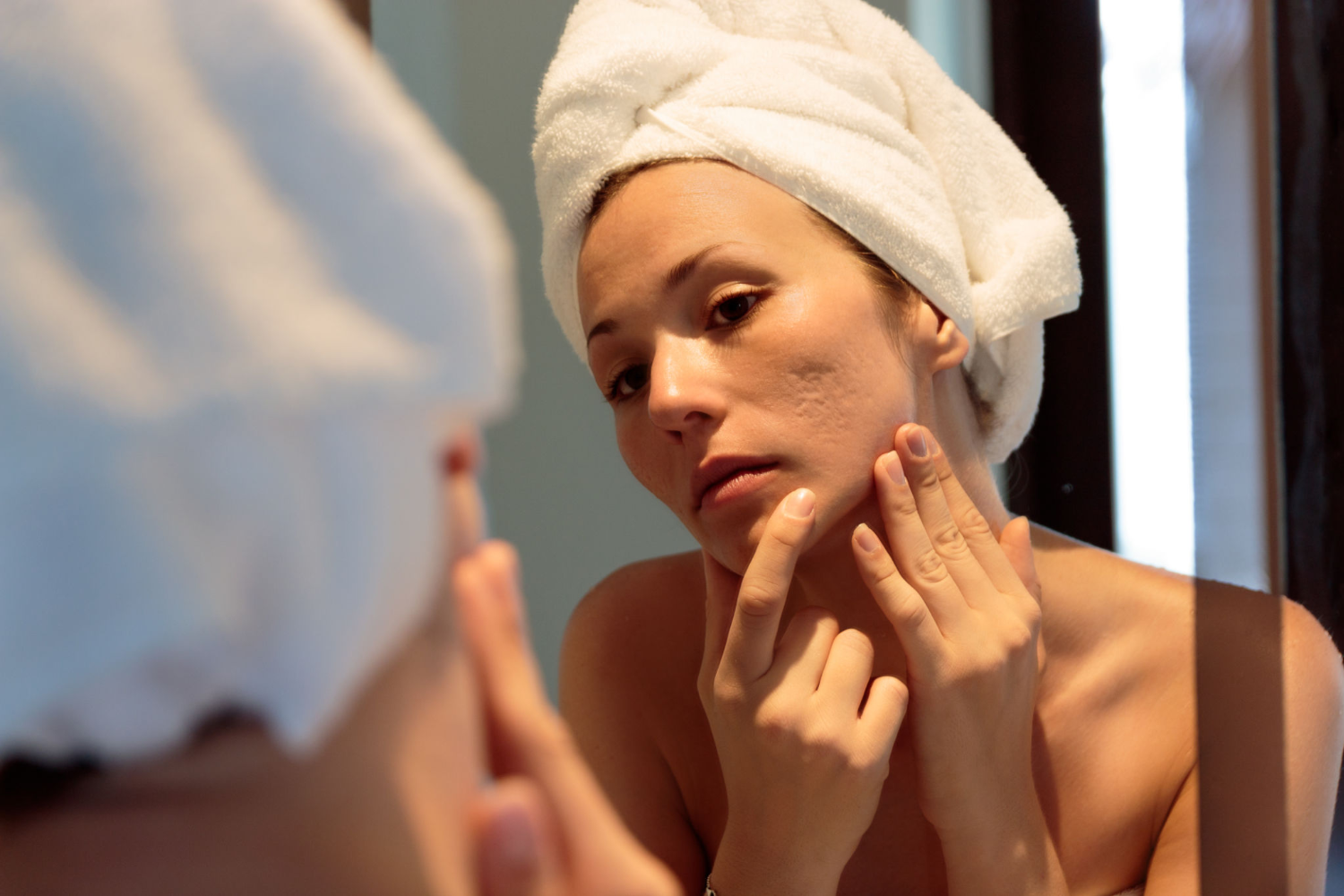Ice pick scars are so called because of their appearance—these small, round, pock-like scars look like the puncture wounds left behind by an ice pick (or other sharp objects). Ice pick scars are typically found on the face and upper torso, where they can become permanent if not treated early. This article will detail everything you need to know about ice pick scars, including why they occur, what they look like, and how to treat them properly in order to prevent scarring and improve the appearance of the affected area.
What are ice pick scars?
Also known as a trichotillomania scar, an ice pick scar is a thin, raised (not indented), and often reddish mark on the skin that appears in irregular shapes. These marks usually form when people have repetitive episodes of picking at their skin. It’s not uncommon for people with anxiety or depression to experience bouts of compulsive or obsessive behavior—and one of these types of disorders can sometimes lead to repetitive pulling out of one’s hair. The result? A series of tiny holes in your skin from which new hair will never grow. When you pull out your own hair, it causes damage to your dermis (the deeper layer of your skin) and epidermis (the outermost layer). Your body will respond by creating new collagen fibers to repair itself; however, because they are so small, ice pick scars often remain visible after healing.
Treatment Options
When it comes to ice pick scars, there are two options: leave them be or correct them with surgery. While many people opt for surgery, scar creams and silicone sheets can help improve their appearance in time. An alternative option is microneedling, a treatment that doesn’t remove your scars but improves their appearance by stimulating collagen production beneath your skin’s surface.
Scar Fading Products
Nothing is guaranteed when it comes to fading scars, but if you’re looking for a way to lighten your skin, consider taking an over-the-counter scar-lightening product. There are many great options out there that use ingredients like vitamin C and licorice root extract. Results can vary depending on your skin type, but these products can certainly help fade those unsightly scars.
Scar Reducing Products
If you’re not into surgery, there are a variety of scar reducing products that you can use at home. Look for products that contain vitamins C and E and silicone, as these ingredients will help fade your scars over time. Vitamin C also helps improve skin texture, so look for scrubs or creams with vitamin C in them as well. Try massaging your scars regularly with a little bit of oil; it might feel uncomfortable at first, but rubbing away dead skin cells reduces scarring.
Scar Prevention Products
If you’re looking for a way to prevent scars, there are several products out there that can help. It’s important to note that these products won’t get rid of a scar once it has already formed, but they can be very helpful in preventing them from getting worse.
Lightening Creams for Ice Pick Scars
Since ice pick scars form when your skin heals quickly, they may fade or disappear when your skin is exposed to Vitamin C. Your dermatologist can help you find a high-quality cream with Vitamin C that’s right for your skin. However, don’t apply it directly to the scar; first, use it on healthy skin nearby and wait a few days before applying it to a scar.
Scar Tissue Remodeling Products (S.T.R.P.)
This scar tissue remodeling cream helps break down hard scars, stretch marks, and surgery scars. S.T.R.P’s active ingredients are available as medicated ointments and lotions; these are typically more soothing than an anti-scar cream which is a silicone-based cream that works well on other types of scars such as acne and ice pick scars. The active ingredient in S.T.R.P products is called Tretinoin (also known as all-trans retinoic acid or ATRA). Tretinoin acts by stimulating collagen production and increasing skin cell turnover rate to make new skin cells replace older ones faster, resulting in less visible scarring after 6-7 months of regular use.
Final Thoughts
Ice pick scars are a lot like pock marks and acne scars. While ice pick scars are small, they can be cosmetically unappealing and difficult to cover up or hide with makeup. They’re also caused by trauma: unlike acne or pock marks, however, ice pick scars aren’t caused by infection (or at least there is no evidence of an underlying bacterial infection). As a result, your scarring may be more pronounced and tougher to treat than other types of facial scarring. Luckily, there are ways to reduce ice pick scars—and they don’t involve expensive cosmetic procedures as we mentioned above.


















